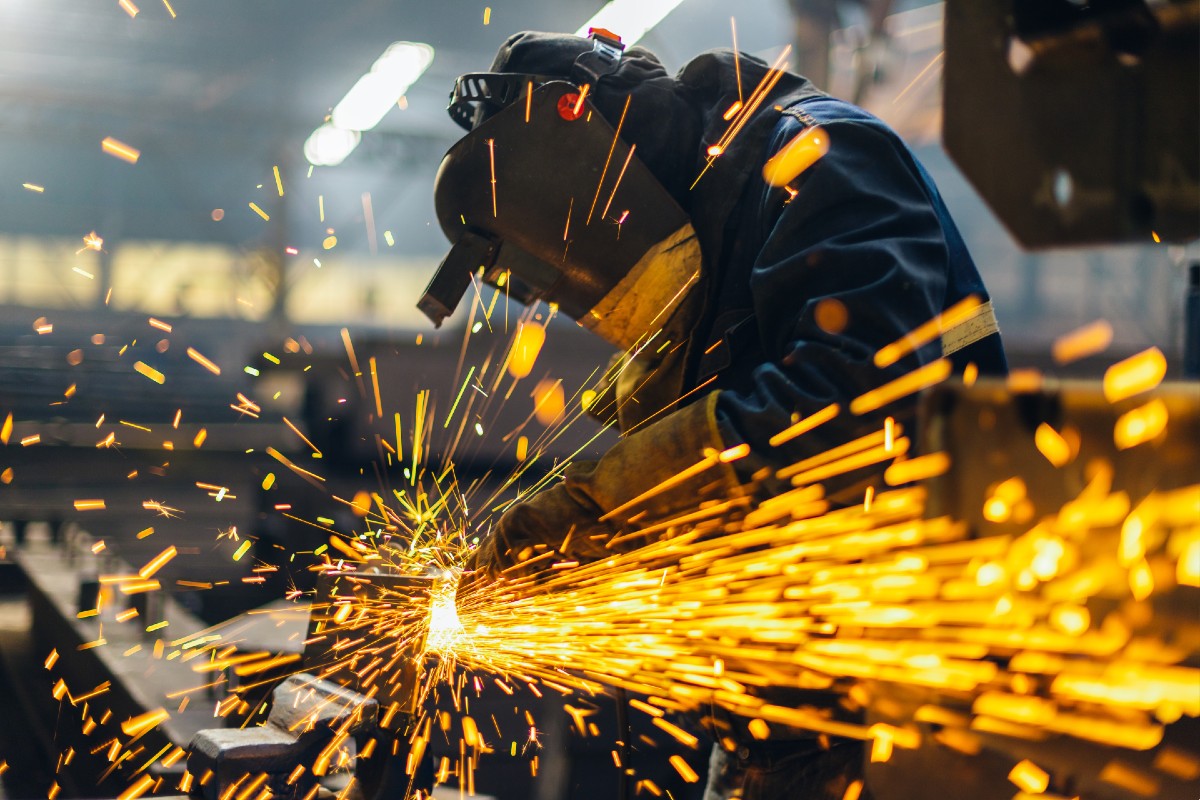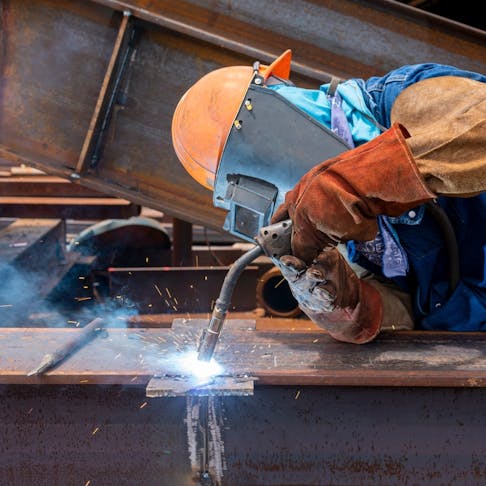All About Welding: Trick Insights Into Techniques and Ideal Practices for Success
Welding encompasses a selection of methods, each suited for certain products and applications. Comprehending these approaches, such as GMAW, SMAW, and TIG, is important for accomplishing suitable results. The best equipment and safety and security techniques can not be neglected. As prep work and fixing play important roles in the welding process, mastering these aspects can greatly boost the high quality of the last item. What are the vital aspects that assure a successful weld?
Understanding Various Welding Methods
Welding methods encompass a selection of approaches, each fit to particular applications and products. Among the most usual strategies are Gas Steel Arc Welding (GMAW), Secured Metal Arc Welding (SMAW), and Tungsten Inert Gas Welding (TIG) GMAW, also called MIG welding, is preferred for its speed and flexibility, making it perfect for thin materials. SMAW, or stick welding, is preferred for its simpleness and effectiveness in outside environments, specifically with thicker steels. TIG welding supplies accuracy and control, making it suitable for detailed work and non-ferrous steels (Montana Mobile Welding and Repair Belgrade Welding). Each strategy has its unique benefits and factors to consider, permitting welders to pick the most effective approach based on the task's needs, product type, and wanted end results. Recognizing these methods is necessary for successful welding
Necessary Welding Devices and Devices
While different welding strategies need details abilities, the appropriate devices and tools are just as essential for achieving top quality results. Necessary welding devices consists of welding equipments, which vary relying on the technique-- such as MIG, TIG, or stick welding. Safety equipment, including safety helmets, aprons, and gloves, warranties safety and convenience during the procedure. Furthermore, components and clamps assist safeguard products in position, guaranteeing precision in welds. Consumables like welding rods, cord, and protecting gas are additionally essential parts that affect the quality of the weld. Tools such as grinders and cutters facilitate surface area prep work and post-weld finishing, contributing to a specialist end result. Investing in premium equipment ultimately boosts the effectiveness and efficiency of welding projects.
Safety And Security Practices in Welding
Appropriate safety and security techniques are important in the welding industry to protect employees from possible threats. Welders should use proper individual safety devices (PPE), including safety helmets with proper shading, handwear covers, and flame-resistant clothing. Appropriate air flow is crucial to reduce exposure to unsafe fumes and gases generated throughout the welding process. In addition, workers ought to be learnt the correct handling of welding devices to stop mishaps. Fire safety and security steps, such as keeping combustible materials far from the welding area and having fire extinguishers conveniently offered, are essential. Routine examinations of devices and workspaces can assist determine potential dangers before they bring about mishaps. By adhering to these safety and security techniques, welders can produce a safer working setting and minimize dangers linked with their trade.
Readying Materials for Welding
Preparing materials for welding is a crucial action that greatly affects the high quality and integrity of the final item (Fabrication). Correct preparation includes cleansing the surfaces to remove impurities such as dirt, oil, and corrosion, which can compromise the weld. Techniques such as grinding, sanding, or making use of solvents are frequently used to attain a tidy surface area. In addition, making certain that the materials mesh snugly is vital; gaps can lead to weak welds. It's also essential to think about the alignment and positioning of the components, as this will certainly influence the ease of welding and the final outcome. Lastly, selecting the suitable filler material and making sure compatibility with the base steels is vital for attaining solid, long lasting welds
Tips for Achieving High-Quality Welds
Achieving high-grade welds needs interest to information and adherence to ideal methods throughout the welding procedure. Correct joint preparation is crucial, making certain surface areas are tidy and complimentary from contaminants. Selecting the ideal filler product and welding method based on the base metals is important for ideal bonding. Preserving constant traveling rate and angle while welding can prevent problems and promote uniformity. Furthermore, regulating warmth input is vital; excessive warmth can bring about bending and weakened joints. On a regular basis checking the welds throughout the procedure permits immediate changes if required. Utilizing ideal post-weld treatments, such as cleaning and anxiety alleviation, can improve the resilience and honesty of the weld, ultimately making sure a successful result.
Troubleshooting Common Welding Issues
Welding frequently provides difficulties that can affect the quality and integrity of the end product. Usual issues such as porosity, inconsistent weld beads, and overheating can develop, each requiring details fixing methods. Understanding these troubles is crucial for welders to enhance their skills and achieve perfect results.
Porosity Problems Clarified
Porosity can often be overlooked, it remains a critical issue in welding that can compromise the stability of a finished item. Porosity refers to the presence of small gas pockets within the weld grain, which can lead and damage the joint to premature failing. This problem generally arises from pollutants, wetness, or incorrect protecting gas protection during the welding procedure. To mitigate porosity, welders must confirm that the base products are clean and completely dry, utilize appropriate shielding gases, and keep regular welding specifications. On a regular basis examining the equipment and atmosphere can also assist identify possible issues before they manifest in the weld. Addressing porosity properly is necessary for achieving strong, sturdy welds that meet top quality standards.

Inconsistent Weld Beads
Irregular weld beads can significantly impact the quality and strength of a finished item. Various factors add to this concern, including incorrect traveling speed, wrong amperage setups, and irregular electrode angles. When the welder moves also swiftly, a bead might show up slim and lack infiltration, while moving as well slowly can create extreme buildup. In addition, utilizing the wrong amperage can result in either damaging or excessive spatter, both of which concession weld stability. The welder's strategy, such as inconsistent torch activity, can also bring about uneven bead look. To mitigate these troubles, welders must concentrate on preserving steady, regulated activities and ensuring correct tools settings to achieve harmony in their welds. Uniformity is essential to achieving trustworthy and solid welds.
Overheating and Warping Issues
Extreme read more warmth throughout the welding process can bring about significant overheating and contorting concerns, affecting the architectural integrity of the workpiece. These troubles usually show up as distortion, which can compromise positioning and fit-up, making additional assembly testing. Elements contributing to overheating include the selection of welding criteria, such as voltage and travel rate, as well as the sort of material being welded. To alleviate these issues, welders should preserve consistent traveling rate and suitable warm input while keeping track of the workpiece temperature. Additionally, preheating or post-weld heat treatment can help minimize stresses caused by quick air conditioning - Fabrication. Regular inspection and adherence to ideal techniques are crucial in protecting against overheating and making sure the durability and reliability of welded frameworks
Frequently Asked Concerns
What Are the Occupation Opportunities in the Welding Sector?
The welding industry provides varied job opportunities, including settings as welders, educators, inspectors, and designers. Specialists can operate in production, building, aerospace, and automobile sectors, gaining from solid demand and competitive wages in various duties.
Just How Can I Boost My Welding Rate Without Compromising Top Quality?
To enhance welding rate without giving up high quality, one need to practice efficient strategies, maintain devices, maximize settings, and enhance hand-eye sychronisation. Routine training and seeking feedback can additionally greatly add to achieving much faster, top notch welds.
What Certifications Are Readily Available for Welders?
Many certifications exist for welders, including those from the American Welding Culture (AWS), the National Center for Building And Construction Education And Learning and Study (NCCER), and various industry-specific organizations. These credentials boost employability and demonstrate ability proficiency.
Just How Does Welding Impact the Features of Metals?
Welding influences the residential properties of steels by changing their microstructure, which can cause adjustments in solidity, stamina, and ductility. Warmth input and air conditioning prices throughout the procedure substantially influence these material qualities.
Can I Weld Dissimilar Metals With Each Other?
